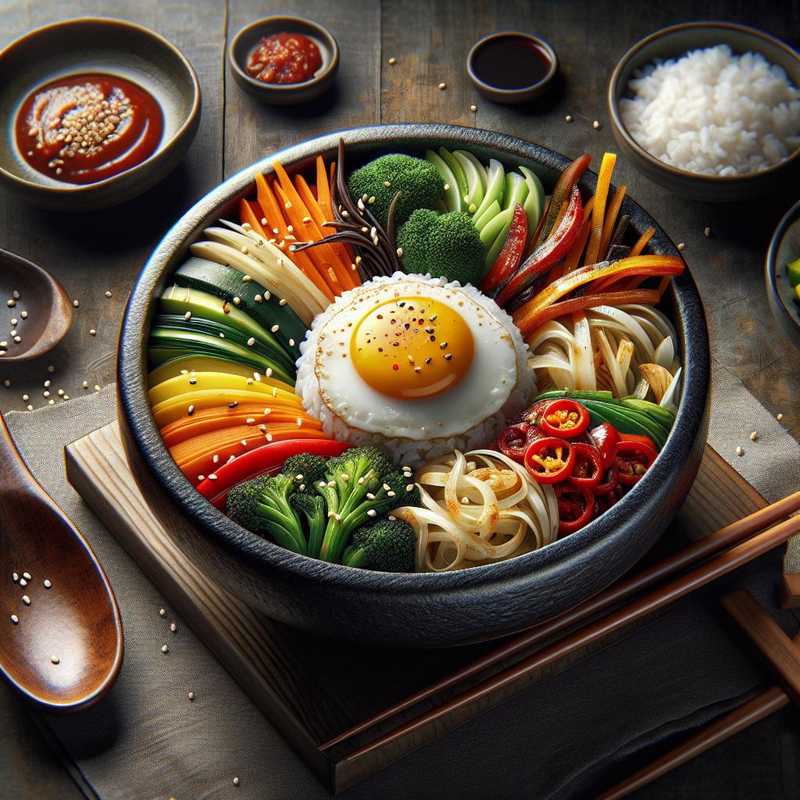Korean Bibimbap
17/11/2023Bibimbap is a traditional Korean dish known for its variety of colorful and nutritious ingredients that combine in a pleasant balance of flavors. The basic recipe for Bibimbap consists of cooked rice, a variety of stir-fried vegetables, meat (often beef), a fried egg, and soy sauce or Gochujang (Korean chili paste). Here is a basic version of the dish that you can customize according to your taste and the ingredients you have available.
Ingredients
- 2 cups of cooked rice
- 200 g of beef, cut into strips
- Assortment of finely chopped vegetables (carrots, spinach, bean sprouts, mushrooms, zucchini, etc.)
- 1 or 2 eggs (depending on the number of servings)
- Sesame oil
- Soy sauce
- 1 tablespoon of Gochujang (optional)
- Salt and pepper
- Toasted sesame seeds for garnish (optional)
- Chopped nori seaweed for garnish (optional)
Preparation
- Cook the rice according to the package instructions and distribute it evenly in bowls.
- While the rice is cooking, stir-fry the vegetables in a pan with a little oil, salt, and pepper, cooking them separately or together according to your tastes. Remember to keep them crunchy.
- In a pan, cook the beef with some soy sauce and sesame oil until it is well done.
- Fry the egg, trying to keep the yolk soft, if possible.
- Assemble the Bibimbap by distributing the rice into bowls, adding the vegetables in separate sections on top of the rice, and then the beef.
- Place the fried egg in the center and garnish with Gochujang, sesame seeds, and nori seaweed, if available.
- Before eating, mix all the ingredients in the bowl well.
Any variety of vegetables can be substituted with those you prefer or have available. If you do not have Gochujang, you can use soy sauce with a little sugar and chili powder to give a spicy touch.
Curiosity
The term “Bibimbap” literally means “mixed rice,” and this dish is often served in a hot stone bowl called “dolsot,” which makes the rice crispy on the bottom.
I’ve provided you with a basic version, but remember that you can always add an Italian touch with typical ingredients like grilled zucchini, eggplants or even the addition of a good extra virgin olive oil instead of sesame oil. Enjoy this Italian-Korean fusion!
